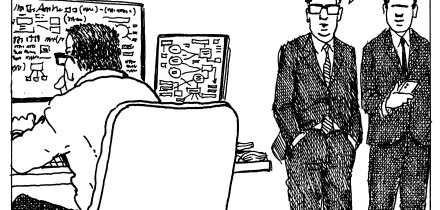To view as PDF, click here.
In recent years, debtors in bankruptcy have been able to obtain broad orders from the courts that restrict trading in their debt securities and other unsecured claims during the course of their bankruptcy proceedings. The ostensible intent of these orders has been to preserve property of the bankruptcy estate by protecting a debtor's ability post-confirmation to utilize net operating loss carryovers ("NOLs") to offset future tax liability. Bankruptcy courts have entered restrictive trading orders in a number of large recent chapter 11 cases, including UAL Corp., US Airways, Mirant Corp., Conseco and WorldCom.
In many instances, the effect of these trading orders has been to immediately halt or seriously restrict trading in the bankrupt corporations' debt. Some creditors consider these restrictive trading orders an impermissible exercise of bankruptcy court power since the unsecured claims that are subject to restriction are not themselves property of the bankruptcy estate. To date, none of these restrictive trading orders has been tested on appeal.
In response to recurring disruptions in the debt trading markets, investors and broker-dealers have been compelled to engage counsel in order to object and in an attempt to restore liquidity in the debt trading market, resulting in the expenditure of substantial time and effort, by both sides, for purposes of fine-tuning the breadth of the orders and putting in place ad hoc procedures to ensure compliance. Now, in an attempt to avoid continuing market disruption, the Bond Market Association (BMA) and the Loan Syndications and Trading Association (LSTA) have jointly put together a model order for use in Chapter 11 proceedings in order to protect a debtor's NOLs without unduly restricting trading in unsecured claims during the pendency of a company's bankruptcy case (the "Model NOL Order").
The Model NOL Order is intended to establish a standard and less restrictive mechanism for dealing with the tax issues raised by debt trading during a Chapter 11 proceeding. In producing the Model NOL Order, the BMA and LSTA consulted extensively with representatives of the debt trading community as well as leading bankruptcy counsel for both debtors and creditors. Representatives of both the trading community and the bankruptcy bar agree that the Model NOL Order strikes an appropriate balance between the interests of market participants and the interest in maximizing the value of the bankruptcy estate for the benefit of all parties.
Background on NOL Orders
NOL trading orders are motivated by certain provisions of the Internal Revenue Code (IRC) that are intended to prevent trafficking in NOL carryovers and other tax attributes. In general, a loss corporation's NOLs will be subject to severe limitation upon a change in control, which generally occurs under IRC § 382 if the percentage of the stock of the loss corporation that is owned by 5 percent shareholders increases by more than 50 percentage points over a 3-year testing period. If the ownership change occurs in a bankruptcy proceeding, however, special rules may apply.
Under one of these special rules, known as § 382(l)(5), a partial exemption from the change in control limitation is available for an ownership change pursuant to a bankruptcy reorganization, so long as the historic shareholders and "qualified creditors" of the debtor corporation own at least 50 percent of the value and voting power of its stock after the change. In most cases, a debtor corporation may treat a creditor as qualified under § 382(l)(5) if, immediately after the bankruptcy reorganization, that person owns less than 5 percent of the debtor corporation's equity.
| Kristofer Hess |
Pursuant to the basic § 382 rule, normal trading in a debtor corporation's equity can directly result in significant limitations on future use of NOL carryovers, regardless of the value of that equity. For this reason, NOL trading orders uniformly place significant restrictions on equity trading during the course of a bankruptcy. Although trading in debt cannot directly result in a limitation under § 382, restricting trade in debt is premised on the debtor's potential conversion of unsecured debt into equity as part of an eventual reorganization plan, which could result in an NOL limitation absent the availability of the § 382(l)(5) exception. The restrictions on debt trading imposed by NOL orders (particularly with respect to large holders) are intended to preserve a debtor's ability to benefit from the favorable presumption that small debt holders are qualified for purposes of the § 382(l)(5) exception. For this reason, although the debt provisions of NOL trading orders vary, they most frequently prohibit large holders of debt from acquiring any additional claims. At early stages of a bankruptcy, these NOL trading orders have also sometimes prohibited all purchases and sales of a corporation's debt. As noted above, such broad restrictions are very disruptive to trading markets, and are often imposed without meaningful notice to the markets, leaving market participants in considerable doubt regarding the status of pending trades. Moreover, by preventing large creditors from increasing their holdings of unsecured claims during the pendency of a proceeding, NOL trading orders may have a secondary effect of enabling a debtor to retain control of its reorganization by prohibiting parties from acquiring a blocking position with respect to a plan or reorganization.
Approach Adopted in the Model NOL Order
| Joe Lamport |
The Model NOL Order is designed to put sufficient trading restrictions in place to achieve a reasonable degree of protection for a debtor corporation's NOL carryovers, while at the same time avoiding unnecessary disruptions to trading markets or providing a de facto take-over defense for a debtor in possession. With respect to debt trading, the Model NOL Order functions by way of a "sell down" mechanism. Under the Model NOL Order, creditors remain free to buy and sell debt throughout the course of a bankruptcy proceeding, unless and until the debtor proposes a plan of reorganization that relies on the § 382(l)(5) exception. In such case, the Model NOL Order would then require large debt holders to sell claims to the extent necessary to preserve the qualified creditor presumption, but in no case below the level that they held when the Order was originally entered. In the event that any such reorganization plan is confirmed, failure to comply with the sell down requirement would result in a large debt holder forfeiting its rights to receive a distribution with respect to the portion of its claims subject to the sell down notice, however non-compliance would impose no other penalty, including providing no basis for a designation of such debt holder's claims in connection with voting on the reorganization plan. In that respect, the Model NOL Order seeks to preserve a level playing field among the debtor and creditors in the plan process.
The Model NOL Order is also designed to minimize market disruption by ensuring adequate notice to market participants. Under the Order, notice must be given via the Bloomberg newswire service before the trading restrictions become effective. The BMA and LSTA believe this will protect buyers, sellers and brokers from the risk of transactions being found void ab initio, which may result from an inadvertent violation of the bankruptcy court's trading order.
| James Bromley |
This week's Learning Curve was written by James L. Bromley, Kristofer Hessand Joe Lamportof Cleary Gottlieb Steen & Hamilton in New York






